SA Release 2024.2
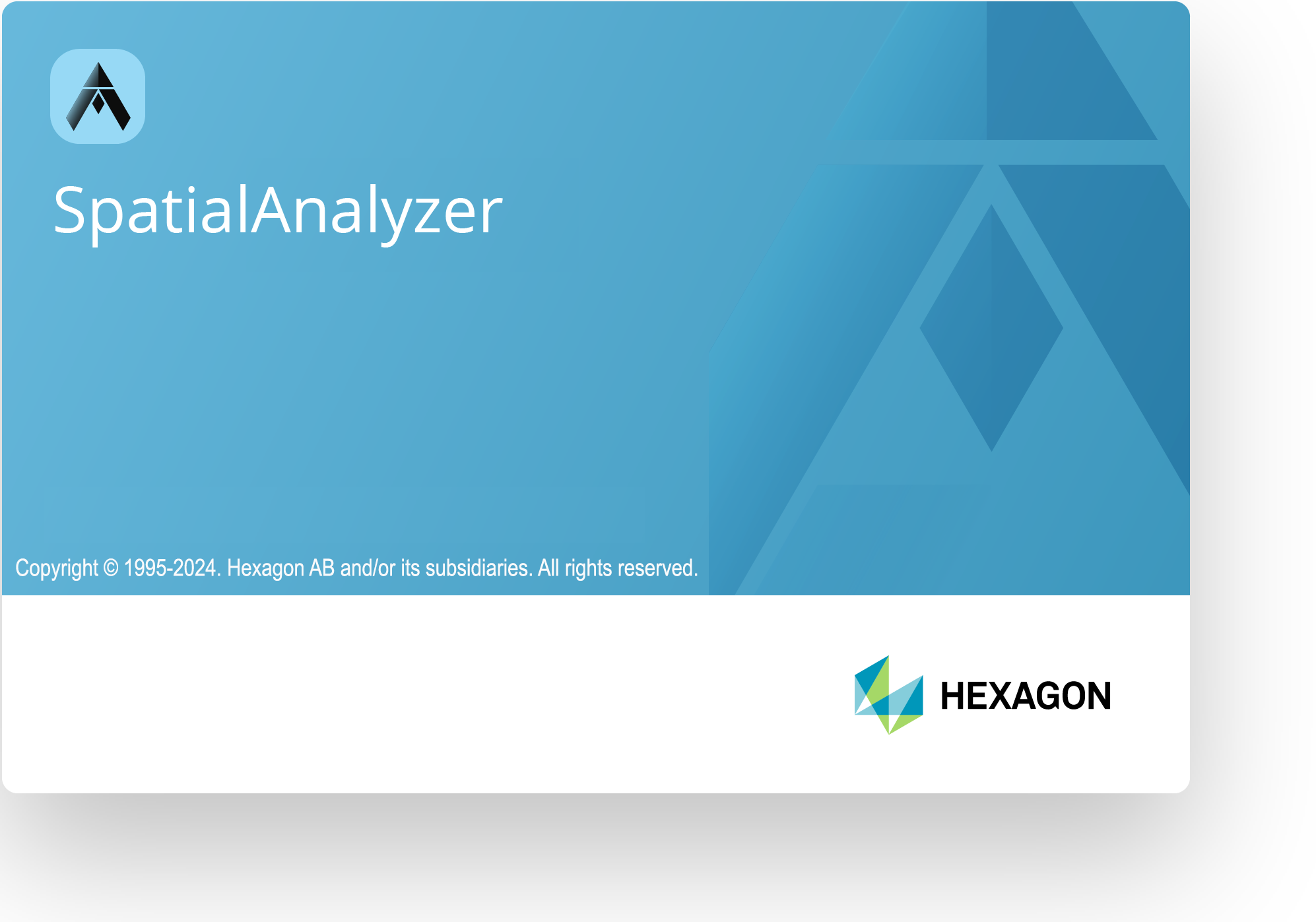 At Hexagon’s Manufacturing Intelligence division, we are dedicated to the continuous development of our core portable metrology software package, SpatialAnalyzer® (SA). We pay close attention to our users' feedback and regularly incorporate user suggestions into new releases. In fact, you'll find that we never stop improving and enhancing SA.
At Hexagon’s Manufacturing Intelligence division, we are dedicated to the continuous development of our core portable metrology software package, SpatialAnalyzer® (SA). We pay close attention to our users' feedback and regularly incorporate user suggestions into new releases. In fact, you'll find that we never stop improving and enhancing SA.
Read below for the latest updates, enhancements, and fixes in SA Release 2024.2. Click here for the download page.
SpatialAnalyzer Version 2024.2
Click here to view this in pdf format.
Click here to view the YouTube webinar.
Feature Extraction From CAD
Added Extracted Feature Preview
Added a preview when constructing circles and slots from CAD faces. If the user hovers near a feature on a CAD face while the selection process is active, the boundary of the feature will be highlighted. This works both on planar surfaces near holes and within holes. When selected, this feature boundary is analyzed, adding better extraction capabilities for round and square slots as well as expanding support for sheet metal parts.
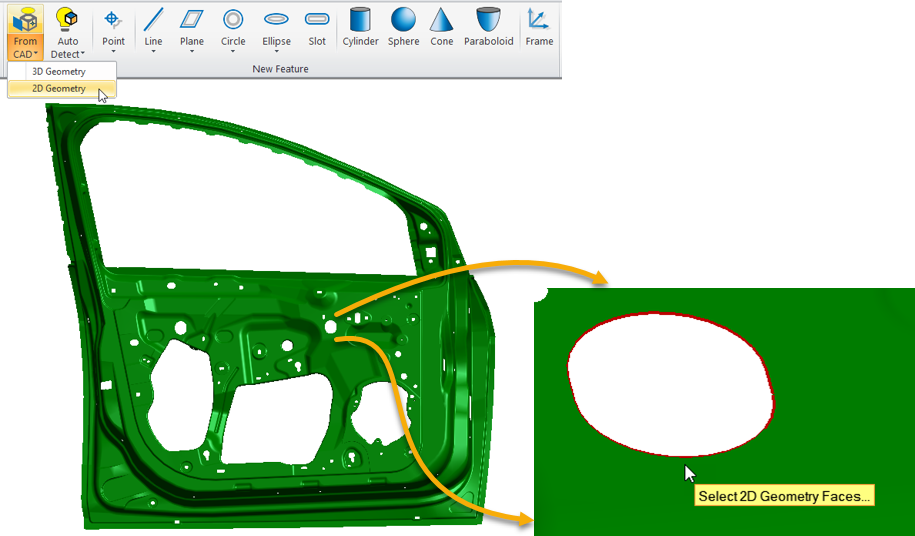
Click Here to see a YouTube demonstration.
Feature Inspection
Add Feature Verification Step to Inspection
This version adds an optional verification step to the inspection process. With it enabled, inspection will pause between features and report the results of the feature fit prior to the next step. During this pause, the Heads-Up Display (HUD) shows the feature’s RMS and any failed criteria, if tolerance is set, as well as enabling the points to fit or points to nominal trapping vectors. It also offers a means to clear the feature results and re-inspect the feature by pressing the previous button.
Related Improvement:
- The Inspection Identification parameters are separated into a new dialog.
- Added ability to set global trapping controls from a stand-alone inspection bar.
- Fixed Inspection Navigation problem with [F7] key sometimes skipping two items in the list.
These additions simplify modifying the reporting flags and reviewing the part identification for reporting.
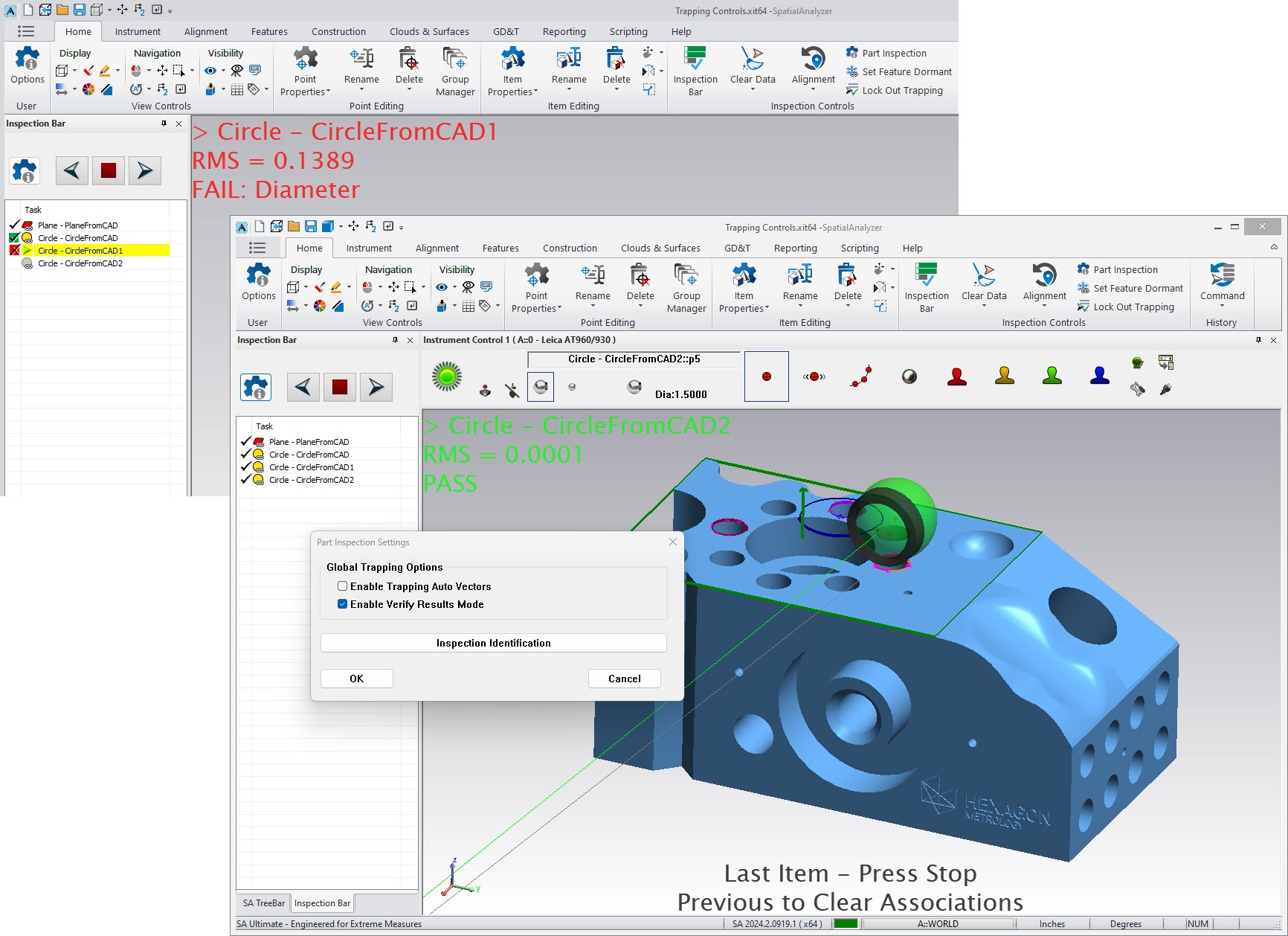
Click Here to see a YouTube demonstration.
Improved User Experience
Added Mathematical Parsing within Dialogs
Basic math operations can now be performed where they are needed most within SA. Rather than exit SA and going to Excel, mathematical expression can now be performed within dialog entry windows, such as tolerances, a transform dialog or point coordinates. This includes both math operations and unit conversions. For example, if you want to add numbers, divide and combine units within the coordinate X in of a known point coordinate, you simply enter an expression like the one shown below:
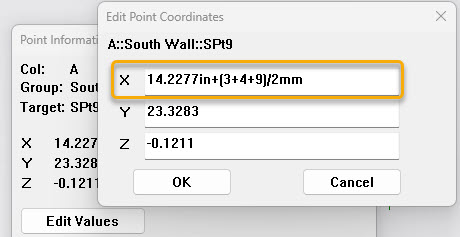
Added Configure Instrument Button
This version adds a Configure Instrument button to a selection of alignment operations (Auto-Measure, Drift Check and Locate Instrument by Measuring Nominal Points) enabling direct access to the instrument settings used in these operations. The option will be shown for instruments that support it, such as laser trackers and total stations.
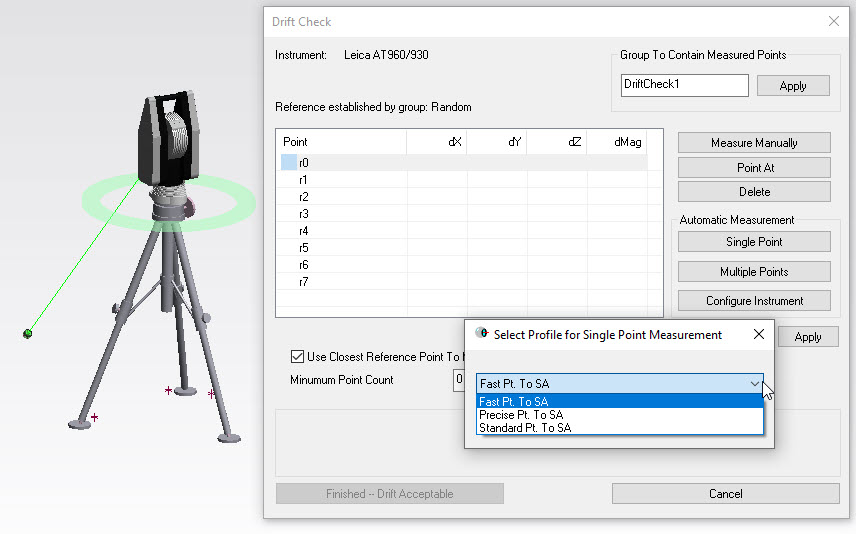
GDT Improvements
Extended Computation Techniques
This version introduces more advanced feature fitting options for GDT Analysis per feature type. Rather than being restricted to either a Least Squares or High Point solution we now offer a selection of fit methods to optimize results.
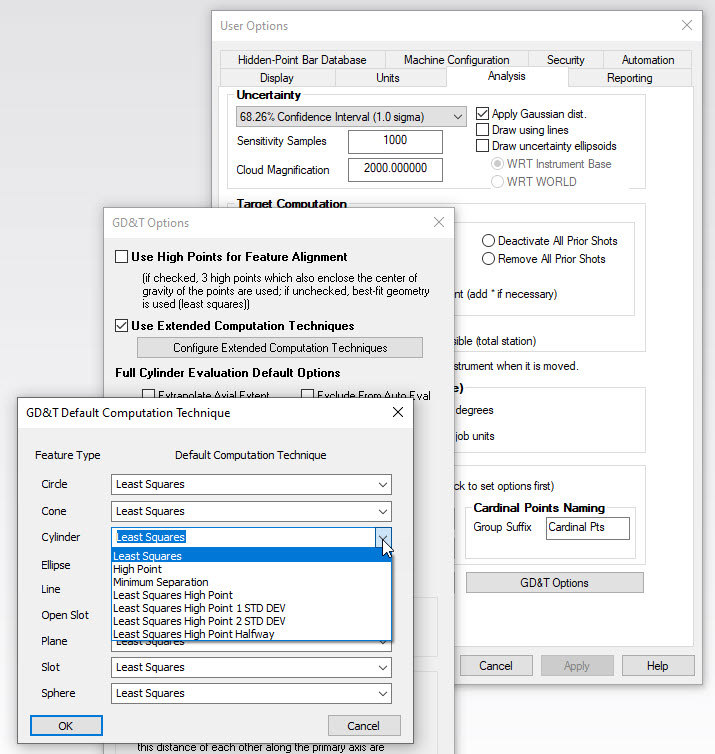
Added Double Letter Recognition to the Annotation Toolbar
Added ability to create GDT checks with multiple character datum names by enclosing multiple character references with square brackets, such as “[AB]” for single datum.

Cloud Based Inspection
Scan Strip Cloud (.RSC) Export and Import Playback
Point cloud measurement can now be simulated through a new file import utility. Export any Scan Stripe cloud through it’s right-click Export RSC File menu and then the cloud is ready for import. This tool offers control over the number of stripes imported in each batch and the rate at which they are processed. An instrument can be picked for association and the cloud points are imported relative to the instrument base as if measured. This gives users an advanced capability for template construction and testing in a repeatable manner.
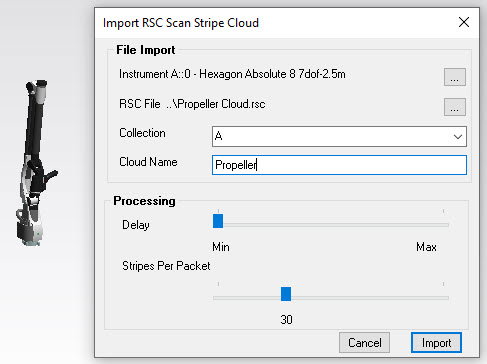
Click Here to see a YouTube demonstration.
Instruments
New Instrument - Hexagon 3D Handheld Scanner
This version introduces support for Hexagon’s new line of handled scanners including:
- ATLASCAN Max
- MARVELSCAN
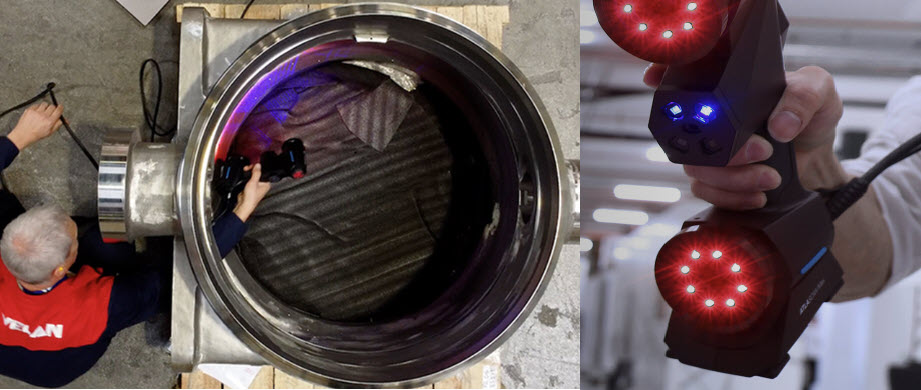
The SA interface integration supports automatic file transfer from HHScan including import of:
- Scan Data in cloud and/or *.stl format.
- Extracted Geometry including circles, grooves (rounded slots), square slots, and rectangular slots.
Default Instrument Model (frame).
For instruments such as the new 3D handheld scanners, the position of the instrument is not known, only the base coordinate for the imported job file. To help clarify this and identify this base location, a simple frame graphic is now shown when an instrument is added and will be shown at the center of the green connection ring. This may be shown for GPSNetworks, Photogrammetry, Laser Projectors, Auxiliary Devices, Hexagon Handheld 3D Scanners. The connection indicator in a view (green ring around the instrument) is now suppressed for 1D measurements such as weather devices and thickness gauges.
Newly Updated GSI V-Stars Interface
This version introduces an all new specially developed interface to the V-stars photogrammetry systems. This interface was developed by GSI through our new SAInstrumentSDK tools and offers simultaneous frame transform tracking, as well as standard S-Mode and M-Mode operations through an updated- streamlined interface with clear connection status indicators.
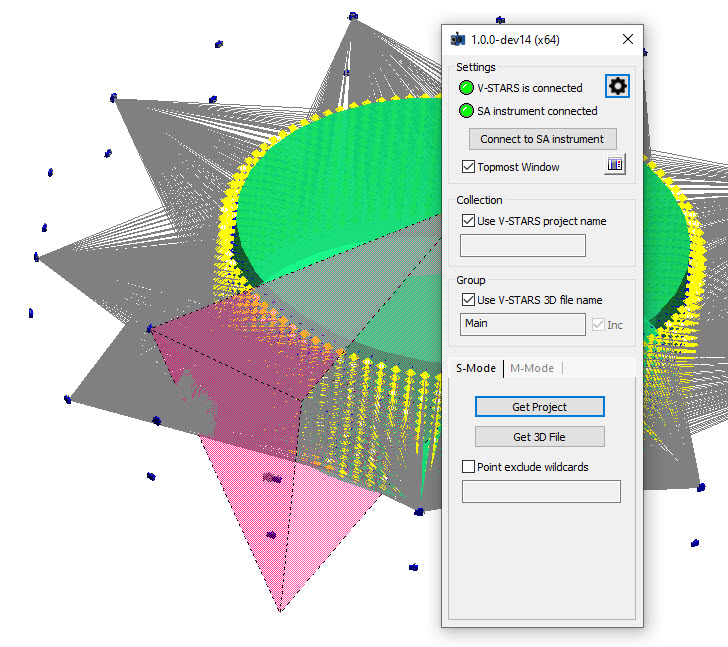
Laser Trackers
Modified Measurement Request - Single Point Parameters to pop up a drop-down list of applicable profiles. This is particularly helpful for Leica trackers which now enable direct selection of Fast, Standard and Precise profiles. Added improved traceability for 6D measurements, including:
- Adding a timestamp to the notes for Frames generated using Measure Level or 6D Discrete Measurement.
- Added an entry for Level Measure to instrument History.
Leica AT9x0 and ATS600
Update LMF to version 1.10.1.539, which adds support for PTP (Precise Time Protocol). If a PTP source is in use, the Time Stamp for Temporal or Spatial scans will be the absolute External source time in seconds contained in the local H::M::S.
API Radian Pro and Plus
A user reported a Watch Window would stop updating when running a V-probe with the probe discrete points profile. This is fixed.
API LADAR
Added the ability to set the IP address of the LADAR at startup. This version also corrects an issue where the MP command “Scan within perimeter” was not stopping.
MP/SDK Scripting Updates
Added Save As XML Option
MP scripts can now be saved and run in an XML format. This option was added specifically for archival processes but is not intended for editing external to the MP editor. As part of this process an updated XML library has been added for faster XML processing. Use the command:
- Use NRKXML Library.To enable this new XML processing library.
New MP Commands
- Construct Ellipse. Adds the ability to simply build an ellipse of a specified size and position.
- Set Ellipse Properties. Enables editing of an existing ellipse’s properties.
- Set Line Properties. Enables editing of an existing line’s properties.
- Make Cloud to Swatch Relationship. Provides a means to build a Swatch Relationship from MP using a single reference point and cloud.
- Get Inspection Verification Mode. Returns the current inspection setting, the current on off status of the newly added inspection verification step.
- Set Inspection Verification Mode. Enables editing of the current feature Inspection mode setting, for use with the new feature inspection verification step in the inspection process.
Updated Commands
- Added options to include point labeling and probing direction as part of the existing Export ASCII Point Clouds command.
- Added new options “Windows User Name” and “Computer Name” to the existing Make a System String command.
Click here to view this in pdf format.
Interested in learning more about SA? We regularly update the SA User Manual (which is installed when you install SA) to reflect the most recent updates and changes to SA. Click here for the download page.